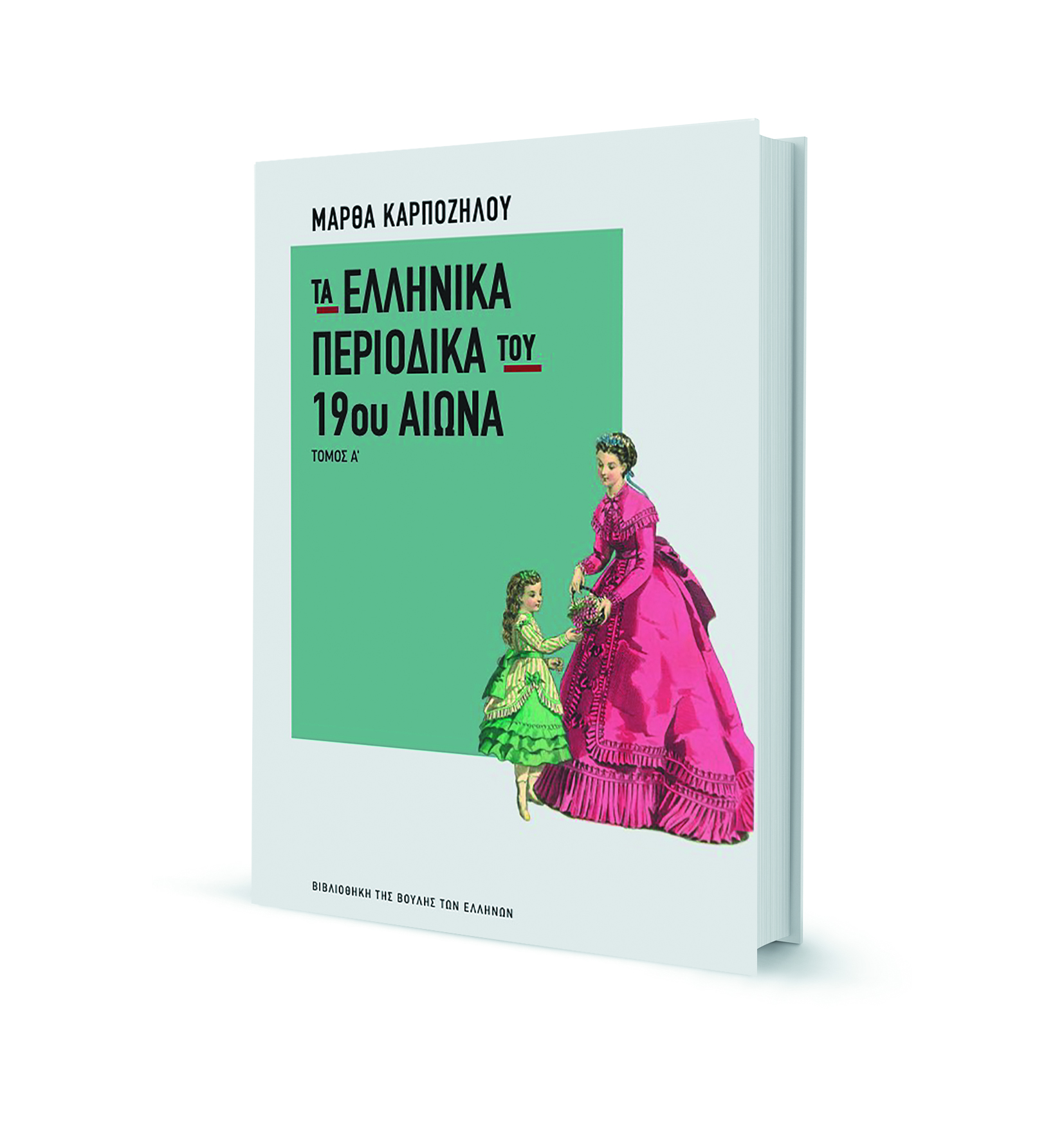
MARTHA KARPOSILOU
Greek journals of the 19th century
ed.. Library of the Hellenic Parliament
Magazine or newspaper? As simple as the answer may seem today, the categories of the 19th-century written press are not easy to define, even the press itself then had difficulty accepting one or another identity. Martha Karposilow, in this meticulous study, answers the question with the clarity that the recording and study of 589 long 19th century periodicals allow, shortlisted based on criteria derived from searching thousands of newspapers, bulletins, reviews, books, periodicals. publications, etc.
Starting with the journal collection of the newly founded ELIAS and the generosity of Manos Charitatos, who knew him, can understand what an important ally and inspiration he was to every researcher, the study was completed by searching for unknown titles in all the libraries of the territory. .
But to whom were the numerous magazines that circulated in the Greek kingdom addressed? Magazines, being cheaper, more attractive and easier to read than books, created a new readership in Greece that participated in debates about science, culture, religion, society, nation. As an agent of progress, but also of conservation, striving for the education of the people, the education of the socially disadvantaged and their entertainment, they made a decisive contribution to the formation of a society that sought social advancement, information, entertainment, while at the same time they acted as catalysts in the creation national, local, religious, gender identity. Their publishers, fully aware of the important role that their publications play in the transforming Greek society, oscillating between East and West, tried not only to meet the general demand for modernization, but also to maintain the “national purity” of their publications.
Martha Karpozilou’s research is a reference tool for researchers involved in the recent social, political and cultural history of Greece.
The first Greek magazines, such as the iconic “Hermes the Learned”, “Kalliopi”, “Melissa” and others, were published at the beginning of the 19th century in Vienna and Paris. After the creation of the Greek state, Athens would be the center of most of the printed matter, followed by other cities of the Greek territory and important centers of the Ottoman Empire, such as Constantinople and Smyrna. Several journals, mainly from Athens, were published by the learned societies and associations established at the beginning of the newly formed state. Philological and family, as the most popular, cover almost the entire 19th century, while at the same time there were magazines devoted to legal, medical, military, religious, church, women’s, children’s, and political issues. Children’s and women’s magazines had the largest circulation, reaching even 6,000 copies, followed by philological and family, commercial, medical, etc.
Their survival was directly related to sales, which were their main source of income, so the “crash” of publishing ventures was very common, especially after the first year of the magazine’s circulation. The main reason was poor paid subscriptions, since subscriptions, even after the establishment of a distribution agency, were, in fact, the most common way for a newspaper to be distributed. In contrast, journals that had institutional funds and well-known sponsors such as schools, learned societies, professional associations, national philanthropists, etc. were privileged to be financially sound.

Their names, often monosyllabic, reflected their content: “Esper”, “Philistor”, “Pandora”, “Asclepius”, “Themis”, “Hestia”, “Clio”, as well as: “Paris wires”, “National Education” , “Ladies’ Magazine”, “Miriya Osa”. And the subheadings usually mentioned the frequency of release and / or the content of the form: “published once every two months”, “published every Sunday”, “Teaching – Terpsis”, “Philology-Art-Variety”, etc.
The publishers who most of the time identified with their publications were usually well-known personalities of the Letters, such as Konstantinos Paparrigopoulos, Georgios Drosinis, Nikolaos Dragoumis, Alexandros Rizos Ragavis, but also many unknown and forgotten today.
The two-volume “Greek Journals of the 19th Century” was published by the Library of the Hellenic Parliament. The first volume is a thorough morphological analysis of the forms, while the second includes their most detailed record. Numerous studies recorded so far in Greek literature on the same subject focus either on subject areas, geographic areas, time periods, or presenting one important journal. Thus, the “vast hinterland” of the press magazine remained unexplored. The panoramic view offered by this work of a lifetime by Martha Karpozilou fills a large gap in Greek literature and will no doubt become a reference work for researchers concerned with the contemporary social, political and cultural history of Greece.
Ms. Lina Louvy is Professor of Modern History in the Department of Political Science and History at Panteillon University.
Source: Kathimerini
Ashley Bailey is a talented author and journalist known for her writing on trending topics. Currently working at 247 news reel, she brings readers fresh perspectives on current issues. With her well-researched and thought-provoking articles, she captures the zeitgeist and stays ahead of the latest trends. Ashley’s writing is a must-read for anyone interested in staying up-to-date with the latest developments.